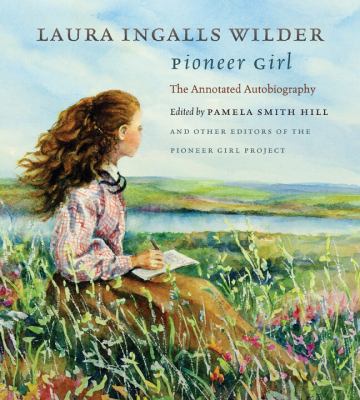A Treasure for Little House fans

When I was a little girl growing up in western Kansas I very earnestly and helpfully (I thought!) explained to my elementary school librarian that she shouldn’t shelve the Little House books in the fiction section because they were all true. As the long-suffering librarian explained to me, and what Wilder herself knew well, is that there is historical fact and there is truth, and the two aren’t necessarily synonymous.

Wilder’s recently published autobiography, Pioneer Girl, is closer to historical fact and, arguably, farther away from “the truth” of her beloved Little House books. In this autobiography intended for an adult audience, Wilder, then in her 60's and living on her Rocky Ridge farm in Missouri, wrote of her experiences growing up on the frontier, from her early years in Kansas in the 1870s to her marriage to Almanzo Wilder in Dakota Territory in 1885.
Rose Wilder Lane, Laura’s daughter and a respected and well-known author in her own right, was unable to find a publisher for her mother’s manuscript. It was only after Rose crafted the first part of the memoir into a children’s story that the Little House series was born.
In a true labor of love, the South Dakota Historical Society Press has now published the original Pioneer Girl: The Annotated Autobiography. Oversized with a lovely dust jacket, generously sprinkled with photos and maps, this beautiful volume is a wonderful gift for Little House fans. The annotations themselves are worth the price: every person, place, song, flora & fauna and so much more have been carefully tracked down and clearly explained. The volume is so heavily annotated in fact that I found it challenging to read; should I read the notes simultaneously with the narrative or afterwards? It was a problem I never did solve.
And what of the autobiography itself? Since this autobiography hews more closely to the historical facts than the Little House books, readers unfamiliar with the real Ingalls family may be surprised at certain events. I certainly won’t look at Jack, the fictional family’s beloved bulldog, the same way again! The writing itself is serviceable (although in fairness, this was a first draft) with some flashes of descriptive brilliance and few of the details of everyday life that are so endearing in the Little House books. Most noticeable is the flatness of the characters: Pa is more fully developed than anyone else, but Ma and Laura’s sisters fade into the background.
In contrast to the dry, fact-based Pioneer Girl, the Little House books are a richly-detailed, warmly evocative portrayal of a loving family creating a series of homes on the challenging frontier – the real “truth” that Laura wanted to convey. I’m thankful Pioneer Girl was never published in Laura’s lifetime since a forgettable autobiography would have replaced a true classic of American literature; I’m equally thankful that now all Little House fans have an opportunity to enjoy Laura’s original version.














